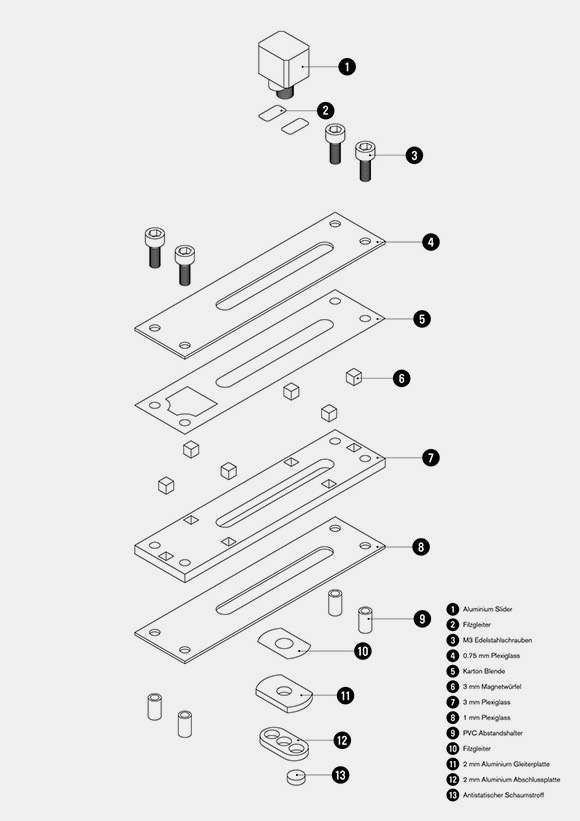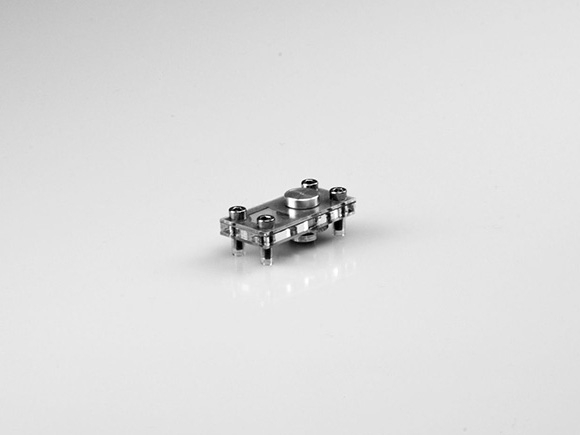Modulares Interface

Modular Interfaces is a physical, haptic extension to multi-touch input devices.
Hand-held multi-touch devices, like the iPad, are becoming more and more omnipresent in our everyday lives and are now used in a variety of applications: checking e-mails, playing games, or browsing on the internet. Ever since the advent of such devices, they were also explored as interfaces for music-making aiming to replace the so-called knob boxes. But one aspect has always been problematic about this field of application: the absence of a haptic feedback.
This project sets out to address this deficit by merging multi-touch surfaces with knob boxes. It introduces a simple and low-tech modification to the devices’s surface in the form of well-known, tangible interface elements like sliders, knobs, and buttons, while at the same time preserving the appreciated flexibility and modularity of multi-touch devices.
The presented system is composed of the following components:
- aluminum controllers ( sliders, knobs, and buttons ) with a magnet-based snap-to-grid system and a small window to allow the underlying screen to display controller values
- an aluminum-plastic frame hosting multi-touch device and controllers
- a software automatically detecting new controllers and sending controller values to connected clients via Wifi
Due to it’s simple construction the system aims to be a low-cost, low-tech and an only temporary modification to a general purpose multi-touch device.







Technical Details and Features
- because the controllers are made from aluminum and make direct contact with the multi-touch device, it suffices for the user to touch the controller to trigger a touch event on the device, as the aluminum conducts the human touch. no extra electronics are needed.
- to prevent the aluminum controllers from scratching the glass surface of the device a conductive foam is used.
- the frame is designed so that the multi-touch devices can be savely removed without corrupting the controller configuration.
- the software running on the device is an iOS app programmed in Cinder/C++.
- after detecting a new controller the application sends the controller’s current properties, whenever the controller is touched or manipulated by a user.
- messages are send via the well-known Open Sound Control ( OSC ) protocol which is frequently used in music ( and artistic ) applications.

[vimeo 108885687]
The project was featured on creativeapplications.net, gizmodo, co.labs, synthtopia, and designboom.

